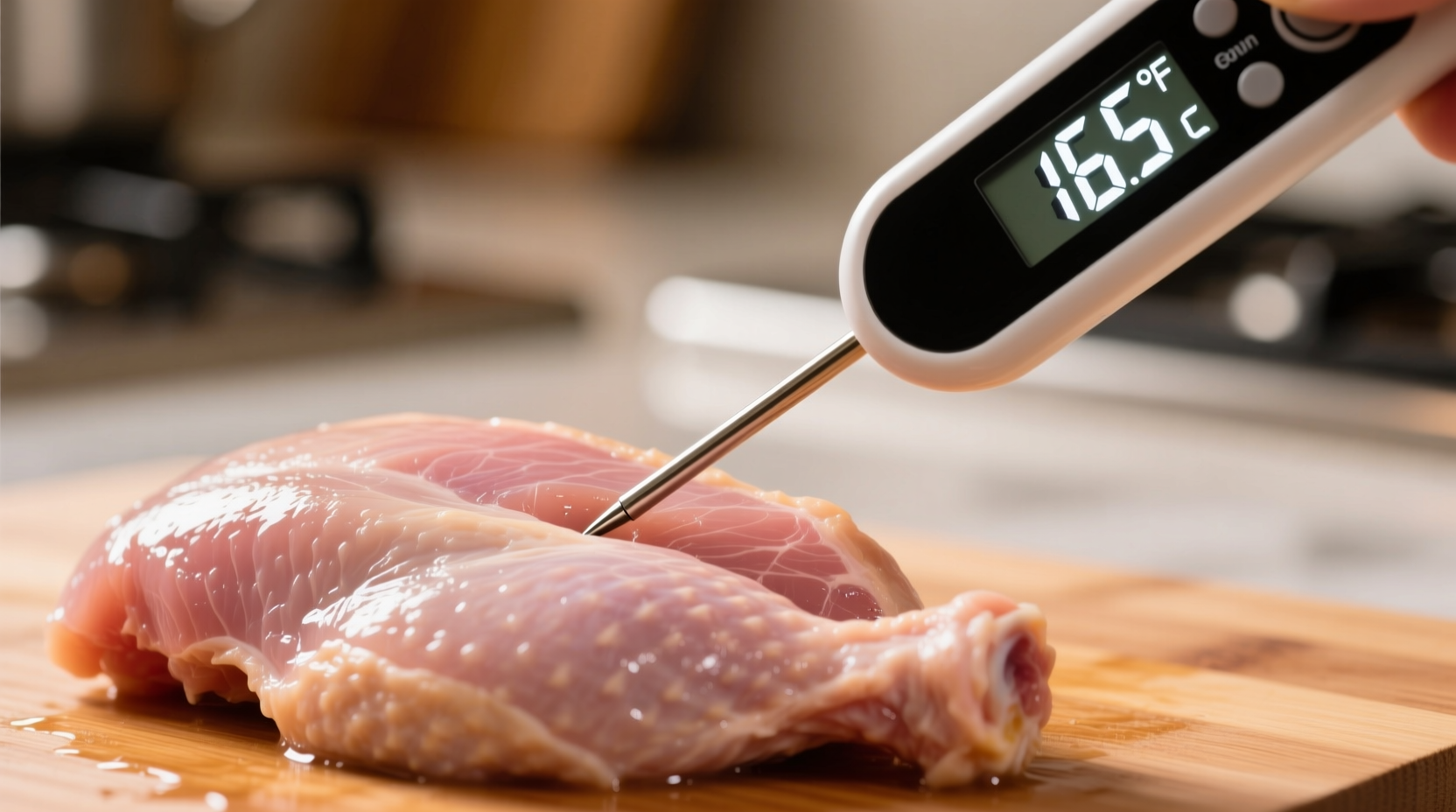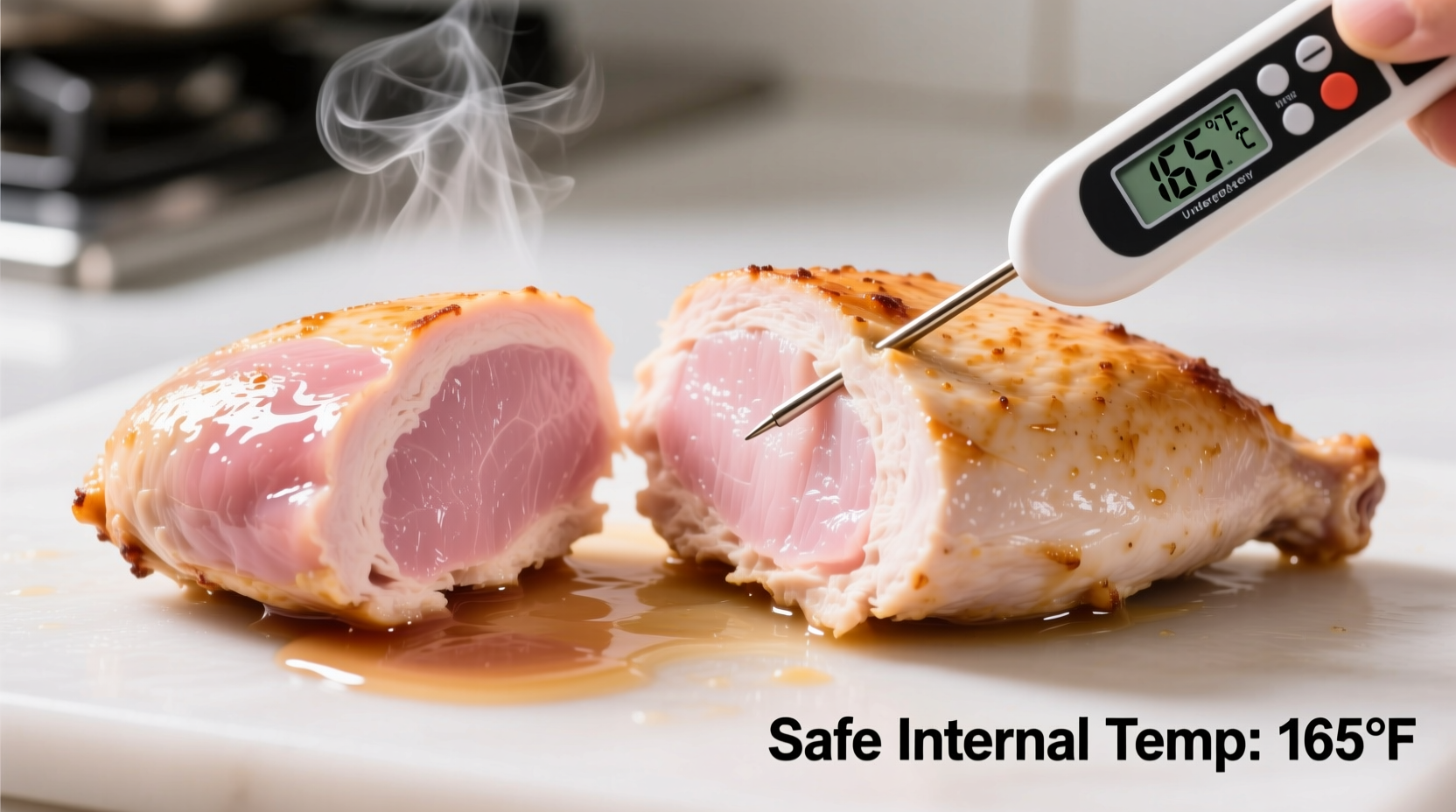Why Chicken Doneness Matters for Your Health
Undercooked chicken harbors dangerous pathogens like Salmonella and Campylobacter that cause over 1 million foodborne illnesses annually in the United States alone, according to the CDC. These bacteria only die at specific temperatures, making proper cooking non-negotiable for safety. While many home cooks rely on visual cues, USDA research shows color changes alone cannot reliably indicate safety—pinkish hues can persist even in fully cooked chicken due to hemoglobin reactions.

The Science-Backed Method: Using a Food Thermometer Correctly
Temperature measurement is the only USDA-approved method for verifying chicken safety. Here's how to do it right:
- Choose the right thermometer - Digital instant-read models (like ThermoWorks) provide accuracy within ±0.5°F
- Insert at the thickest part - Avoid bones, fat, or gristle which give false readings
- Wait 15 seconds for digital models to stabilize (mechanical dial thermometers need 30-60 seconds)
- Check multiple spots in larger pieces like whole chickens or roasts
| Chicken Cut | Minimum Safe Temp | Recommended Rest Time |
|---|---|---|
| Breast (boneless) | 165°F (74°C) | 3-5 minutes |
| Thighs/Drumsticks | 165°F (74°C) | 5-10 minutes |
| Whole Chicken | 165°F (74°C) | 15-20 minutes |
Resting time allows heat to distribute evenly and carryover cooking to complete the process. Never eyeball doneness—the USDA's Food Safety and Inspection Service confirms visual methods fail 25% of the time in controlled tests.
Visual and Tactile Methods: When Thermometers Aren't Available
While never recommended as primary verification, these secondary indicators can provide supplementary clues if you've lost your thermometer:
- Juice test - Piercing the thickest part should release clear (not pink or red) juices
- Texture assessment - Properly cooked chicken feels firm yet yields slightly when pressed
- Visual inspection - Meat separates easily from bone without pink tissue visible
Important caveat: These methods have significant limitations. Brined chicken often appears pink even when safe, and dark meat naturally retains more moisture. The USDA explicitly states that color alone is unreliable due to variables like pH levels and cooking method.
Debunking Common Chicken Cooking Myths
Many home cooks operate under dangerous misconceptions:
| Myth | Reality | Source |
|---|---|---|
| “No pink means safe” | Pink hues can persist in fully cooked chicken due to myoglobin reactions | USDA FSIS |
| “Clear juices = done” | Juices may run clear while internal temp remains unsafe | CDC Food Safety Guidelines |
| “Cooking time guarantees safety” | Thickness, starting temp, and oven accuracy affect actual cooking | American Meat Science Association |
Special Considerations for Different Cooking Methods
Each cooking technique presents unique challenges for determining doneness:
- Grilling - Create two heat zones; move chicken to indirect heat when exterior appears done, then verify internal temperature
- Sous vide - Set to 165°F for immediate safety, though 145°F for 30+ minutes also eliminates pathogens (per FDA guidelines)
- Frying - Crust formation doesn't indicate internal temperature—always verify with thermometer
- Slow cooking - Ensure chicken reaches 165°F within 4 hours to avoid bacterial growth in danger zone
For bone-in pieces, remember dark meat (thighs, drumsticks) requires slightly longer cooking than white meat (breasts, wings) due to higher fat content and density. Always test the breast first since it cooks faster.
What to Do If You've Undercooked Chicken
If your thermometer reveals undercooked chicken (<165°F), follow these FDA-approved steps:
- Immediately return to heat source—do not let sit at room temperature
- Cook in 2-minute increments, rechecking temperature each time
- Never partially cook chicken to finish later—this creates perfect bacterial growth conditions
- If chicken has been sitting over 2 hours at room temperature, discard it per USDA guidelines
When in doubt, throw it out. The CDC reports that 1 in 6 Americans get sick from contaminated food annually—don't become a statistic over a few minutes of extra cooking time.
Building Confidence in Chicken Cooking
Developing reliable chicken cooking habits takes practice. Start by:
- Keeping a dedicated poultry thermometer in your cooking area
- Recording actual cooking times for your common recipes
- Practicing the touch test with verified cooked samples
- Understanding that carryover cooking raises temperature 5-10°F during resting
Professional kitchens follow the mantra “trust but verify”—develop visual intuition through experience, but always confirm with a thermometer. This dual approach builds culinary confidence while maintaining safety standards.











 浙公网安备
33010002000092号
浙公网安备
33010002000092号 浙B2-20120091-4
浙B2-20120091-4